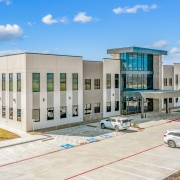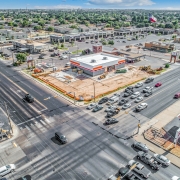The Current Effects of Inflation on the US Commercial Real Estate Market
Inflation continues to significantly impact the commercial real estate (CRE) market in the United States. It’s no surprise that high inflation rates coupled with increased interest rates has put consumer spending under pressure in recent months. Rising costs in goods, services, and gas has already had far reaching consequences in the CRE space. At SIG, our Investment Advisors are aware that as prices rise, while we may face challenges, significant opportunities continue to emerge for investors, developers, and tenants. We’re paying close attention to the impact of increased insurance costs in the United States and the effects of rising inflation on the market.
Inflation’s Impact on CRE
Rising Construction Costs: One immediate effect of inflation on the CRE market is increased construction costs. With construction costs expected to rise by as much as 6% this year, prices for raw materials like steel, lumber, and concrete are soaring, raising the cost of new development projects. This can delay or halt new construction, tightening the supply of commercial properties and driving up rental rates for existing properties. For example, in the industrial sector, average net rents are projected to increase at a pace of 5% over the next three years.
Higher Operating Expenses: Inflation also affects day-to-day operating expenses, including utilities, maintenance, and labor costs. Property owners may pass these costs along to tenants through higher rents or operating expense pass-throughs, impacting tenant retention and leasing activity. Proper underwriting and market knowledge is where brokers like SIG can add value to help investors see around the corner. If you know what can happen, you can prepare for it.
Interest Rates and Financing: As inflationary pressures mount, “the Federal Reserve’s decision to maintain the target interest rate at 5.25%-5.50% reflects a cautious strategy in the face of inflation”, reports The Global Treasurer. With current interest rates potentially near their peak, investors are anxious for a rate cut. High interest rates have large impacts on new acquisitions and refinancing of existing properties, slowing down transaction volumes in the CRE market.
Opportunities Amidst Inflation
Despite these challenges, there are opportunities for savvy investors:
Adaptive Reuse Projects: With new construction costs rising, adaptive reuse of existing buildings can be a cost-effective alternative. Converting underutilized or obsolete properties into new uses can provide investment opportunities while mitigating high construction costs.
Strategic Investments: Investors can take advantage of inflation by focusing on resilient property types and locations. For instance, industrial properties, in high demand due to the growth of e-commerce, may offer more stable returns compared to other sectors. Our team of Investment Advisors are experts in assisting investors make strategic investment decisions that will maximize the performance of their portfolios.
Value Retention in Hard Assets: Commercial real estate tends to retain value better than some other investment types during inflationary periods. Investors seeking to hedge against inflation might find CRE attractive, as it provides income through rental payments over a longer term period, and has a stronger chance of potential appreciation in property value.
Rising Insurance Costs
The country is facing unique challenges regarding inflation, particularly in insurance costs. The impact of climate change has made multiple regions prone to natural disasters such as hurricanes, floods and tornadoes which is significantly impacting insurance premiums. According to the credit rating firm, AM Best Co. Inc, commercial real estate insurance costs skyrocketed to nearly five times the national pace. Inflation exacerbates this issue in several ways:
Specifically, investors in the Southeastern USA, or those looking to invest in the region, need to be aware that rising insurance costs exacerbates the issue of inflation because of the rise in hurricanes and floods. Inflation increases costs of materials and labor, thus the cost of repairs to damaged properties rise. High risk areas carry higher insurance premiums which drive up operating costs and impact bottom line profitability.
As advisors, we understand that rising insurance costs can influence investment decisions, as higher operating expenses may affect the attractiveness of certain properties or markets. Investors might seek regions with lower insurance costs or properties with robust mitigation measures to reduce risk and control expenses. Our wide range of inventory allows our expert Investment Advisors to recommend assets that fit your risk profile and investment goals.
While rising costs and interest rates pose challenges, strategic investment, and adaptive management can help mitigate these impacts. In the disaster prone regions, the added dimension of escalating insurance costs requires careful consideration and proactive risk management.
At SIG, our Investment Advisors are well-versed in navigating the complexities of the current inflationary environment, providing insights and strategies to help our clients make informed decisions and capitalize on opportunities in the commercial real estate market. By understanding the nuanced effects of inflation and employing targeted investment strategies, SIG remains committed to delivering value and stability to our clients amidst the evolving economic landscape.

















Leave a Reply
Want to join the discussion?Feel free to contribute!